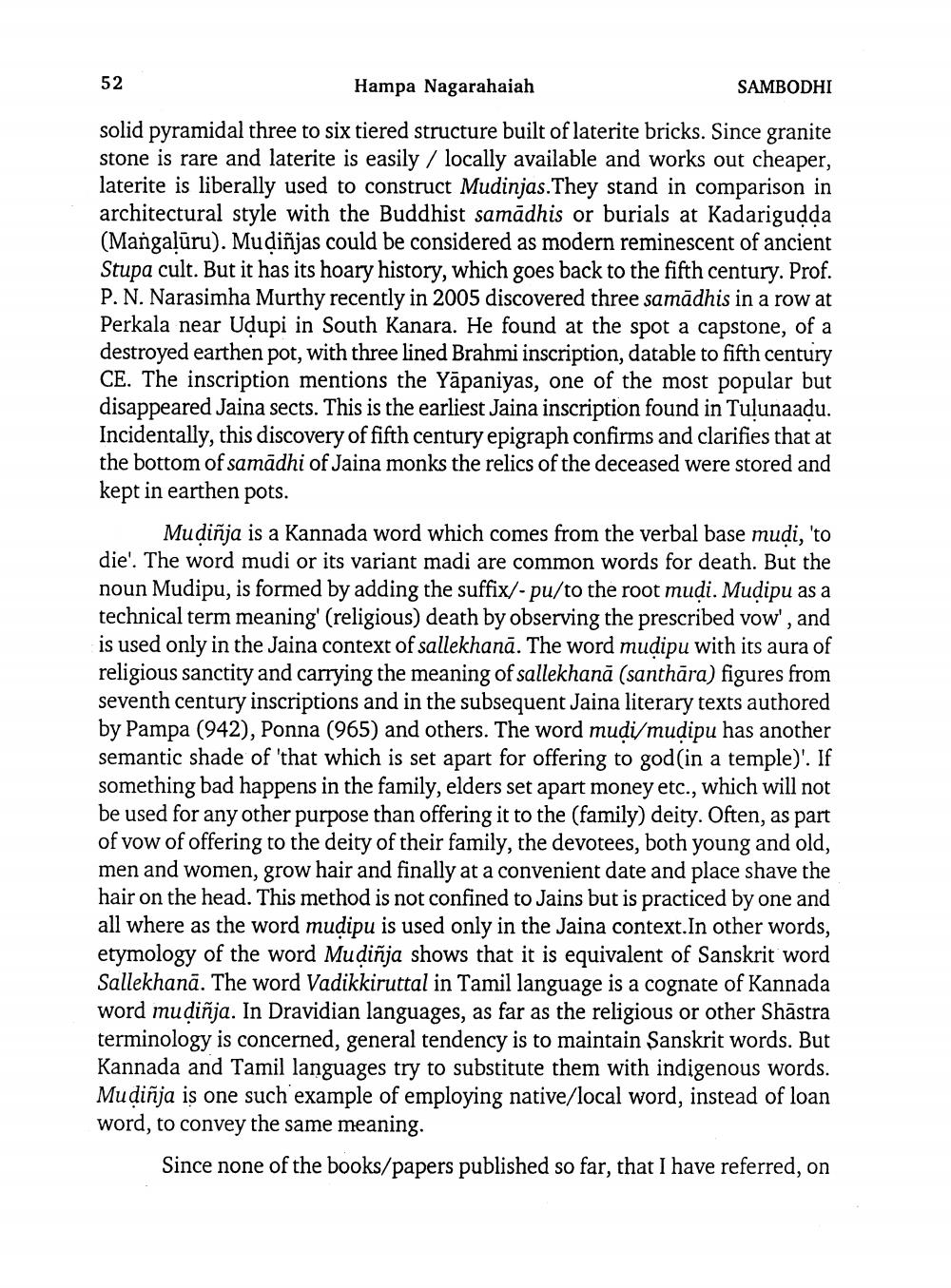________________
52
Hampa Nagarahaiah
SAMBODHI
solid pyramidal three to six tiered structure built of laterite bricks. Since granite stone is rare and laterite is easily / locally available and works out cheaper, laterite is liberally used to construct Mudinjas.They stand in comparison in architectural style with the Buddhist samadhis or burials at Kadarigudda (Mangalūru). Mudiñjas could be considered as modern reminescent of ancient Stupa cult. But it has its hoary history, which goes back to the fifth century. Prof. P. N. Narasimha Murthy recently in 2005 discovered three samadhis in a row at Perkala near Udupi in South Kanara. He found at the spot a capstone, of a destroyed earthen pot, with three lined Brahmi inscription, datable to fifth century CE. The inscription mentions the Yāpaniyas, one of the most popular but disappeared Jaina sects. This is the earliest Jaina inscription found in Tulunaadu. Incidentally, this discovery of fifth century epigraph confirms and clarifies that at the bottom of samadhi of Jaina monks the relics of the deceased were stored and kept in earthen pots.
Mudiñja is a Kannada word which comes from the verbal base mudi, 'to die'. The word mudi or its variant madi are common words for death. But the noun Mudipu, is formed by adding the suffix/- pu/to the root mudi. Mudipu as a technical term meaning' (religious) death by observing the prescribed vow', and is used only in the Jaina context of sallekhanā. The word mudipu with its aura of religious sanctity and carrying the meaning of sallekhanā (santhāra) figures from seventh century inscriptions and in the subsequent Jaina literary texts authored by Pampa (942), Ponna (965) and others. The word mudi/mudipu has another semantic shade of 'that which is set apart for offering to god (in a temple)'. If something bad happens in the family, elders set apart money etc., which will not be used for any other purpose than offering it to the (family) deity. Often, as part of vow of offering to the deity of their family, the devotees, both young and old. men and women, grow hair and finally at a convenient date and place shave the hair on the head. This method is not confined to Jains but is practiced by one and all where as the word mudipu is used only in the Jaina context. In other words, etymology of the word Mudiñja shows that it is equivalent of Sanskrit word Sallekhanā. The word Vadikkiruttal in Tamil language is a cognate of Kannada word mudiñja. In Dravidian languages, as far as the religious or other Shāstra terminology is concerned, general tendency is to maintain Sanskrit words. But Kannada and Tamil languages try to substitute them with indigenous words. Mudiñja is one such example of employing native/local word, instead of loan word, to convey the same meaning.
Since none of the books/papers published so far, that I have referred, on




